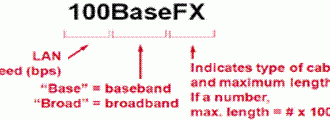The Token Ring network was originally developed by IBM in the 1970s. It is still IBM’s primary LAN technology and is second only to Ethernet in general LAN popularity. The related IEEE 802.5 specification is almost identical to and completely compatible with IBM’s Token Ring network.
Collisions cannot occur in Token Ring networks. Possession of the token grants the right to transmit. If a node receiving the token has no information to send, it passes the token to the next end station. Each station can hold the token for a maximum period of time.
Token-passing networks are deterministic, which means that it is possible to calculate the maximum time that will pass before any end station will be able to transmit. This feature and several reliability features make Token Ring networks ideal for applications where delay must be predictable and robust network operation is important. Factory automation environments are examples of such applications.
Token Ring is more difficult and costly to implement. However, as the number of users in a network rises, Token Ring’s performance drops very little. In contrast, Ethernet’s performance drops significantly as more users are added to the network.
Token Ring Bandwidth
Here are some of the speeds associated with Token Ring. Note that Token Ring runs at 4 Mbps or 16 Mbps. Today, most networks operate at 16 Mbps. If a network contains even one component with a maximum speed of 4 Mbps, the whole network must operate at that speed.
When Ethernet first came out, networking professionals believed that Token Ring would die, but this has not happened. Token Ring is primarily used with IBM networks running Systems Network Architecture (SNA) networking operating systems. Token Ring has not yet left the market because of the huge installed base of IBM mainframes being used in industries such as banking.
The practical difference between Ethernet and Token Ring is that Ethernet is much cheaper and simpler. However, Token Ring is more elegant and robust.
Token Ring Topology
The logical topology of an 802.5 network is a ring in which each station receives signals from its nearest active upstream neighbor (NAUN) and repeats those signals to its downstream neighbor. Physically, however, 802.5 networks are laid out as stars, with each station connecting to a central hub called a multistation access unit or MAU. The stations connect to the central hub through shielded or unshielded twisted-pair wire.
Typically, a MAU connects up to eight Token Ring stations. If a Token Ring network consists of more stations than a MAU can handle, or if stations are located in different parts of a building–for example on different floors–MAUs can be chained together to create an extended ring. When installing an extended ring, you must ensure that the MAUs themselves are oriented in a ring. Otherwise, the Token Ring will have a break in it and will not operate.

